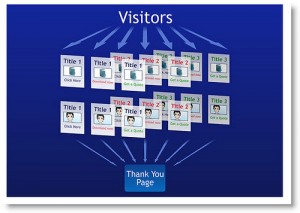How to Humanize Your Marketing Automation Practices
 Companies that are deploying marketing automation practices are finding out that a marketing automation platform (MAP) can positively impact marketing budgets and improve close rates. However, for a MAP to be truly effective, there should be some human engagement woven between digital engagements. How do you dovetail automated functions with live engagement effectively? We’ve got a few ideas on how to humanize your marketing automation practices.
Companies that are deploying marketing automation practices are finding out that a marketing automation platform (MAP) can positively impact marketing budgets and improve close rates. However, for a MAP to be truly effective, there should be some human engagement woven between digital engagements. How do you dovetail automated functions with live engagement effectively? We’ve got a few ideas on how to humanize your marketing automation practices.
Set Alerts
Sales reps should be alerted when a lead is visiting your site. You want sales to respond quickly to inbound activity. Set an alert based on certain parameters, such as a lead visiting a specific landing page. Prior to responding to an inquiry, sales should be able to view a lead’s profile including company data and lead scoring. With a platform like Lead Liaison’s Lead Management Automation™, sales reps a provided critical information that they can use when they respond to active leads.
Be Social on Social Channels
Don’t simply distribute canned messages to your followers – mix it up with your leads! Using automated social posting will make your team more efficient but make sure they take the time to respond to inquiries, comments, etc. Best practices suggest setting email or SMS alerts when a social channel has been engaged or “checking in” at least 2x daily as an appropriate schedule during the early stages of deploying social marketing.
Introduce a Sales Rep Early in the Nurturing Process
Why wait to connect a sales rep with a B2B buyer until later in the buying process? If your lead distribution style is round robin introduce the next sales rep early in the lead engagement process. This doesn’t mean the sales rep has to personally engage with the lead, simply sending contact details in case there are questions can be a way to connect. (You may know by now that customized lead distribution is a great feature when you want to assign ownership of a lead to a specific rep.)
Collect Business Intelligence from Third-Party Sources
Best-in-breed MAPs integrate with research company databases covering 1000s of industries. Sales reps should have company details, contact information, and online behavior when they view a lead’s record. Lead Liaison’s LMA platform integrates with industry-specific resources so the platform automatically embeds lead data into your records.
The key to humanizing your marketing automation practices is to know when leads should be contacted. It’s not always easy to determine but there are a few tactics you can use consistently. In our next post, we’ll discuss those tactics.










